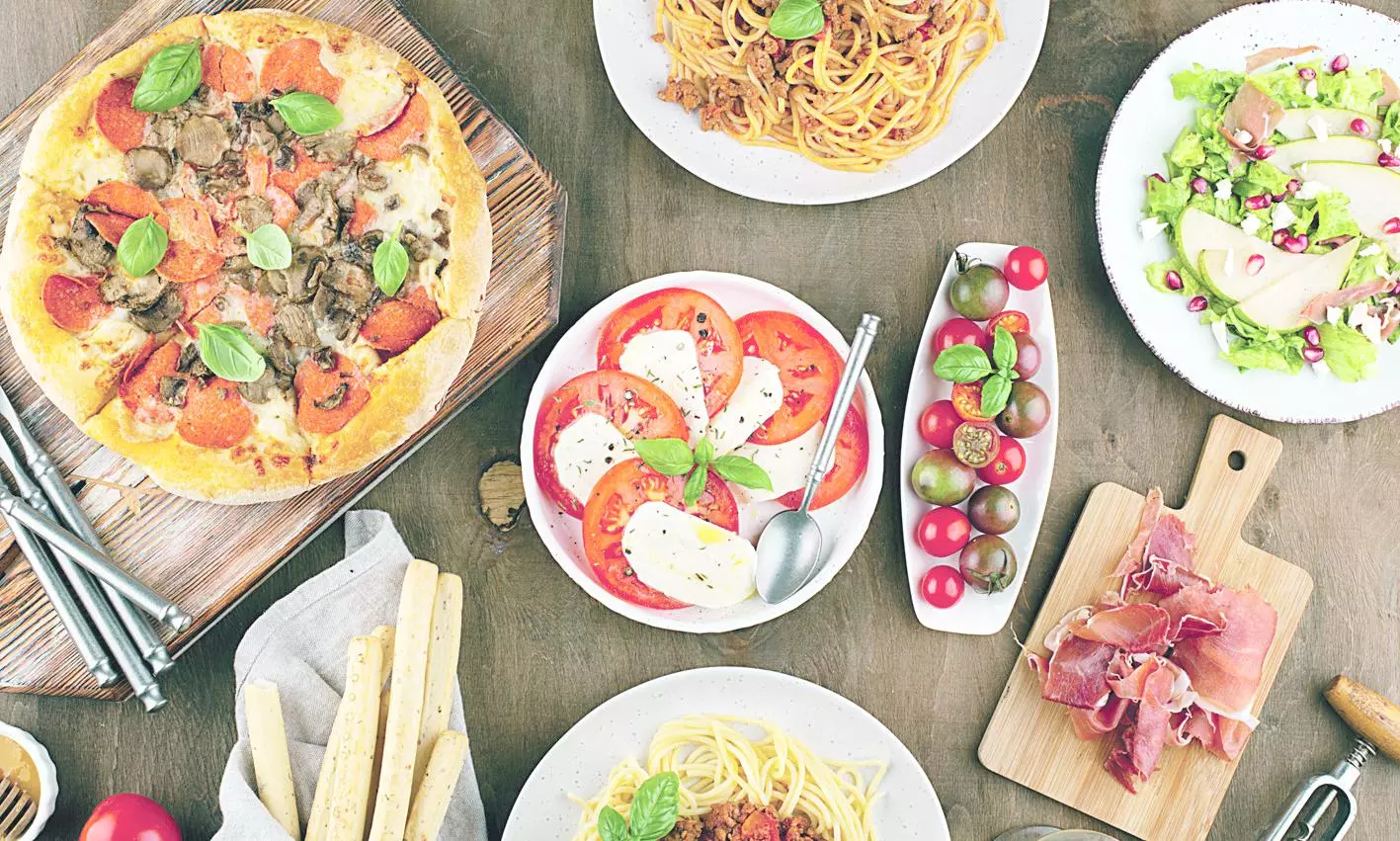Cibo Italiano: Where Health Greets Taste!

Whether one knows the Italian language or about ‘la dolce vita’ or not, ‘pizza,’ ‘pasta,’ ‘tiramisu,’ and ‘gelato’ have almost become household names in India. In recent years, with several high-end and mid-range restaurants exclusively dishing out Italian cuisine, for many urban Indians, it has become the go-to food.
If prepared the authentic way, cucina Italiana offers an amazing combination of health and taste for foodies and fitness-freaks. It is much-needed because insalubrious ready-in-a-jiffy junk foods have precariously flooded the Indian culinary market making it rare to find appetizing delicacies that don’t jeopardize consumers’ health.
High on heart health, low on Obesity
Interestingly, despite daily intake of high-calorie cheesy pizza and oil-rich pasta, Italians can boast of the lowest adult obesity rates and higher life expectancy compared to many other developed countries. As per the last Bloomberg Global Health Index survey (2019), Italy ranked as the second healthiest country in the world, preceded just by Spain. Both these countries follow the Mediterranean Diet.
WHAT CONSISTS OF A TYPICAL ITALIAN DIET?
The culinary staples of an authentic Italian cuisine include healthy fats like extra virgin olive oil, durum wheat (semolina flour) pasta of different sizes and shapes, a variety of cheeses, high intake of plant-based foods such as fresh fruits and seasonal veggies, salads, nuts, seeds and whole grain cereals, various herbs and spices, seafood, fish and chicken, some red meat such as salame, prosciutto (dried and cured ham) etc.
SECRET INGREDIENTS AND CULINARY TRADITIONS
Apart from genetics and an active lifestyle, the formula for their staying slim and healthy is linked to their socio-cultural habits, culinary traditions and ingredients in the Mediterranean diet. The chief ingredients – whole grains, seasonal fruits and antioxidant-rich colourful vegetables, used in Italian kitchens are organically grown without chemical pesticides, they also use freshly made sauces and condiments, lots of healthy aromatic herbs that add to the taste such as basil, parsley, rosemary, oregano etc and often the food is grilled and steamed rather than deep-fried.
WHO ON ITALIAN EATING HABITS
While researchers have established the health-promoting properties of the Mediterranean diet, including protection against various chronic conditions, cardiovascular diseases and Type-2 diabetes, the World Health Organisation (WHO), has also observed how socio-cultural factors among Italians including shared eating practices, making and enjoying meals with family and friends, preferring homecooked food over eat-outs and takeaways and eating locally sourced organically grown food, siestas after meals and prolonged meal times (not screen times) have contributed to health benefits.
COOKING WITH VITAMIN L (LOVE)
Nutritionist and Lifestyle Educator Karishmma Chawla quips, “Adding ‘Vitamin L (Love)’ while cooking and enjoying the meals in the company of family and loved ones enhances the beneficial effects of the food on the body. Also cooking and eating in a relaxed, unhurried way without stress makes a positive difference.
LOW-CALORIE TWISTS TO TASTY PLATTERS
Italian cuisine can be made wholesome without an overdose of olive oil, sweet syrups, creamy sauce and cheese. If calorie-watchers want to dodge the cheese altogether and enjoy a pizza, they can opt for Pizza Marinara, which uses tomato paste sauce instead of mozzarella. Also, oat flour instead of usual bleached white flour can be used to make pancakes.
CHOOSE CHEESE CAUTIOUSLY
Nutrition experts advise intake of cheese in moderation and select low-fat fresh cheese in daily diet. “Cheeses are essential for bone health and for protein and calcium intake. Low-fat cheeses, with a fat content of less than 20 % and especially fresh cheeses are recommended such as cottage cheese, ricotta, Greek feta, stracchino, instead of mozzarella in pizza and as a condiment in pasta,” points out an Italian nutritional biologist Dr Luca Agostini.
“Ricotta cheese has only 3 gms of fats and less caloric content. For better weight management, one can always use this cheese when it comes to making pasta or pizza,” adds nutritionist Karishmma.
GOODNESS OF OLIO D’OLIVA
While pasta and cereals like rice provide the muchneeded instant energy, olive oil is a source of good fats that cleans the arteries and keeps the heart healthy. It has anti-inflammatory potent and is a source of antioxidants. One to maximum four servings (tablespoons) of extra virgin olive oil per day is recommended by Cleveland Clinic.
MIND THE TIME FOR COFFEE & WINE
Unlike Indians and the rest of the world, who don’t mind drinking coffee throughout the day, Italians have a fixed time for consuming coffee with milk (before midday). They also usually drink an alcohol-based aperitif (usually prior to dinner). The timing and moderate quantity enable them to maximize the benefits from these beverages.

